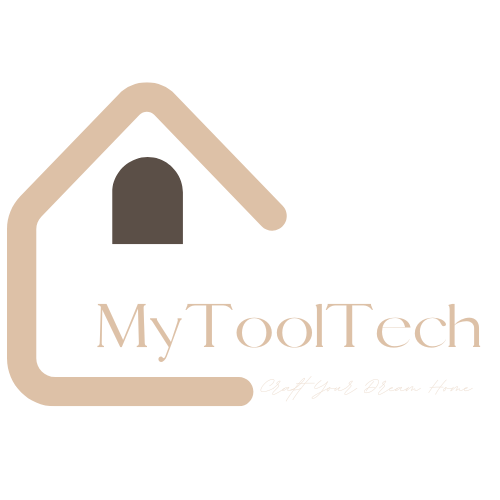An impact driver is one of those tools that can completely transform your approach to DIY projects or professional tasks.
With their ability to deliver immense rotational force with minimal effort, they make even the toughest jobs easier.
Whether you’re a seasoned professional or a DIY enthusiast, choosing the right impact driver can make a significant difference in your efficiency and the quality of your work.
But with so many options on the market, how do you know which one is right for you?
In this guide, we’ll walk you through everything you need to consider when buying an impact driver, ensuring you make a choice that perfectly suits your needs.
Table of Contents
What is an Impact Driver?

Impact drivers are indispensable tools for anyone who regularly works with screws, bolts, and other fasteners.
Unlike standard drills, impact drivers are designed to deliver higher torque, making them ideal for driving screws into tough materials like hardwood, metal, or masonry.
The key difference between a drill and an impact driver lies in how they apply force.
While a drill uses continuous rotational force, an impact driver combines rotational force with quick bursts of impact, delivering more torque with less effort.
This combination allows the tool to drive fasteners more efficiently, reducing the risk of stripping screws or causing user fatigue.
Impact drivers are particularly useful for tasks that involve long screws or lag bolts, where a regular drill might struggle or overheat.
Their compact size and lightweight design also make them easier to handle in tight spaces or overhead work.
Understanding the core function of an impact driver helps in appreciating the various features that different models offer, and why they are a must-have in any toolbox.
This overall helps you select the best impact driver for your job.
Things to Consider When Buying an Impact Driver
1. Brushless vs. Brushed Motors
| Feature | Brushless Motor | Brushed Motor |
|---|---|---|
| Efficiency | Higher efficiency, longer battery life | Lower efficiency, shorter battery life |
| Power Output | Greater power output | Less power output |
| Heat Production | Less heat generated, reducing overheating | More heat generated, higher risk of overheating |
| Maintenance | Minimal maintenance required | Requires regular maintenance (brush replacement) |
| Durability | Longer lifespan due to less wear and tear | Shorter lifespan due to brush wear |
| Cost | Higher initial cost | Lower initial cost |
| Advanced Features | Supports smart electronics (customizable settings, overload protection) | Limited to basic features |
| Best For | Frequent, heavy-duty use | Light, occasional use |
When shopping for an impact driver, one of the most important considerations is the type of motor: brushless or brushed.
The difference between these two motor types can significantly impact the performance, longevity, and overall value of the tool.
Brushless motors are the newer technology and are generally considered superior.
They operate without the physical brushes that create friction in brushed motors, leading to several advantages.
First, brushless motors are more efficient, which translates to longer battery life and greater power output.
This efficiency also means they produce less heat, reducing the risk of overheating during heavy use and extending the motor’s lifespan.
Additionally, brushless impact drivers, like the Flex 24V, require less maintenance since there are no brushes to replace, making them a more convenient and cost-effective option in the long run.
They also allow for smart electronics, which can optimize performance and add features like customizable settings or overload protection.
On the other hand, brushed motors are the more traditional option and are typically found in entry-level or budget-friendly impact drivers.
While they are less expensive, they come with some drawbacks.
Brushed motors are less efficient, which can lead to shorter battery life and less overall power.
They also generate more heat due to the friction of the brushes, which can cause wear and tear over time.
Moreover, the brushes themselves will eventually wear out and need to be replaced, adding to the tool’s maintenance needs.
In summary, while brushed motors can be a good choice for those on a tight budget or for light, occasional use, brushless motors offer better performance, durability, and convenience.
If you’re looking for a tool that will stand up to frequent, demanding tasks, investing in a brushless motor is well worth the extra cost.
2. Voltage and Performance
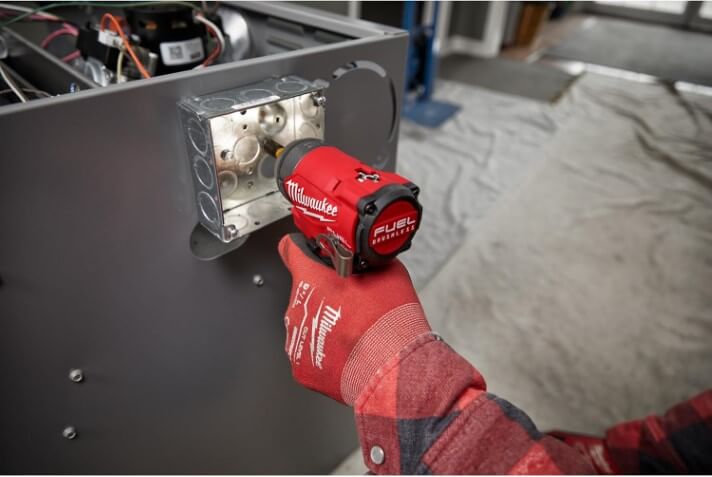
When it comes to impact drivers, voltage plays a significant role in determining the tool’s power and performance.
Impact drivers are commonly available in 12V, 18V, 24V, and even higher voltage configurations.
The choice of voltage impacts not only the power output but also the tool’s ability to handle different tasks effectively.
12V impact drivers are ideal for lighter tasks, such as driving screws into softer materials.
They offer a balance between power and portability, making them suitable for DIY enthusiasts and those who don’t require extreme power.
However, for more demanding applications, 18V impact drivers are the go-to option.
They deliver significantly more torque, allowing you to drive long fasteners into harder materials without breaking a sweat.
This makes them the preferred choice for professionals who need a reliable tool for heavy-duty tasks.
Higher voltage impact drivers, like 24V or 40V, push the performance even further.
These are designed for the toughest jobs, providing immense power to tackle the most stubborn fasteners and materials.
However, the added power often comes with increased weight and size, which might not be necessary for every user.
When choosing the right voltage, consider the types of tasks you’ll be performing most frequently.
If you need a versatile tool that can handle both light and heavy-duty work, an 18V impact driver is often the best choice.
For those who require maximum power, investing in a higher voltage model might be worth the trade-off in weight and size.
3. RPM and Variable Speed Control
When selecting an impact driver, understanding the importance of RPM (revolutions per minute) and variable speed control is crucial.
RPM determines how fast the impact driver can rotate the fastener, which directly affects the tool’s efficiency and control during use.
Most modern impact drivers offer multiple RPM settings, typically ranging from low to high speeds.
For example, a high-quality impact driver might offer RPM ranges of 0-1,700, 0-3,000, and 0-3,900, giving you the flexibility to adjust the speed according to the task at hand.
Variable speed control is equally important because it allows you to fine-tune the RPM based on the material and the fastener being used.
This feature is particularly useful when precision is required, such as when working with delicate materials or small fasteners.
With a variable speed trigger, you can gradually increase or decrease the speed, offering greater control and reducing the risk of damaging the material or stripping the fastener.
Having multiple speed settings and a variable speed trigger ensures that your impact driver is versatile enough to handle a wide range of applications, from light tasks like assembling furniture to heavy-duty jobs like driving large screws into hardwood or metal.
This level of control and flexibility is essential for both professionals and DIY enthusiasts who want to achieve the best results with their tools.
4. Torque and Impacts Per Minute (IPM)
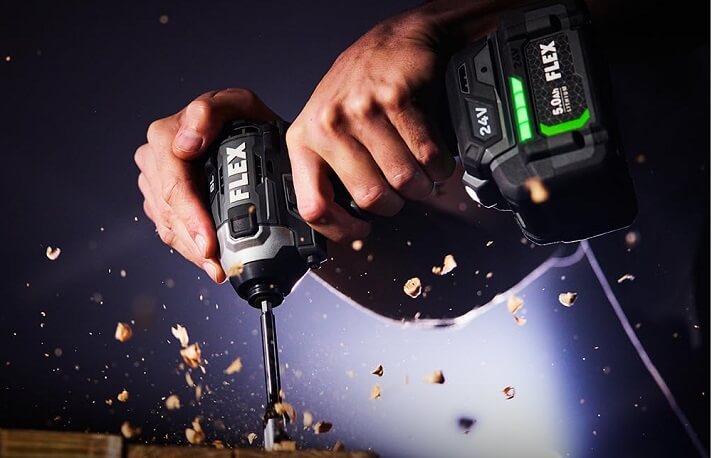
Torque and Impacts Per Minute (IPM) are critical factors to consider when choosing an impact driver.
Torque refers to the rotational force the tool applies to a fastener, and it’s the defining feature of an impact driver.
For tasks that require driving long, thick, or stubborn fasteners into tough materials, higher torque is essential.
Impact drivers typically offer torque levels ranging from 1,200 inch-pounds in 12V models to over 2,000 inch-pounds in more powerful 18V models.
This torque level surpasses what most drills can provide, making impact drivers indispensable for heavy-duty applications.
IPM, or Impacts Per Minute, represents how many times the internal hammer strikes the anvil to generate the tool’s driving force.
A higher IPM indicates the ability to deliver more frequent impacts, which helps to drive fasteners faster and with greater force.
For instance, 12V impact drivers generally offer IPMs in the range of 2,200 to 3,200, while 18V models can reach up to 3,800 IPM.
The combination of high torque and high IPM allows impact drivers to handle even the most challenging tasks, such as driving screws into dense materials like hardwood or removing rusted bolts.
This power and efficiency make impact drivers the go-to tool for both professionals and serious DIYers who need to get tough jobs done quickly and efficiently.
Understanding the balance between torque and IPM is key to selecting the right impact driver for your needs.
For general-purpose tasks, a moderate torque and IPM level may suffice.
However, for more demanding jobs, opting for a tool with higher torque and IPM will ensure that you have the power needed to complete your projects with ease.
5. Battery Platform Compatibility
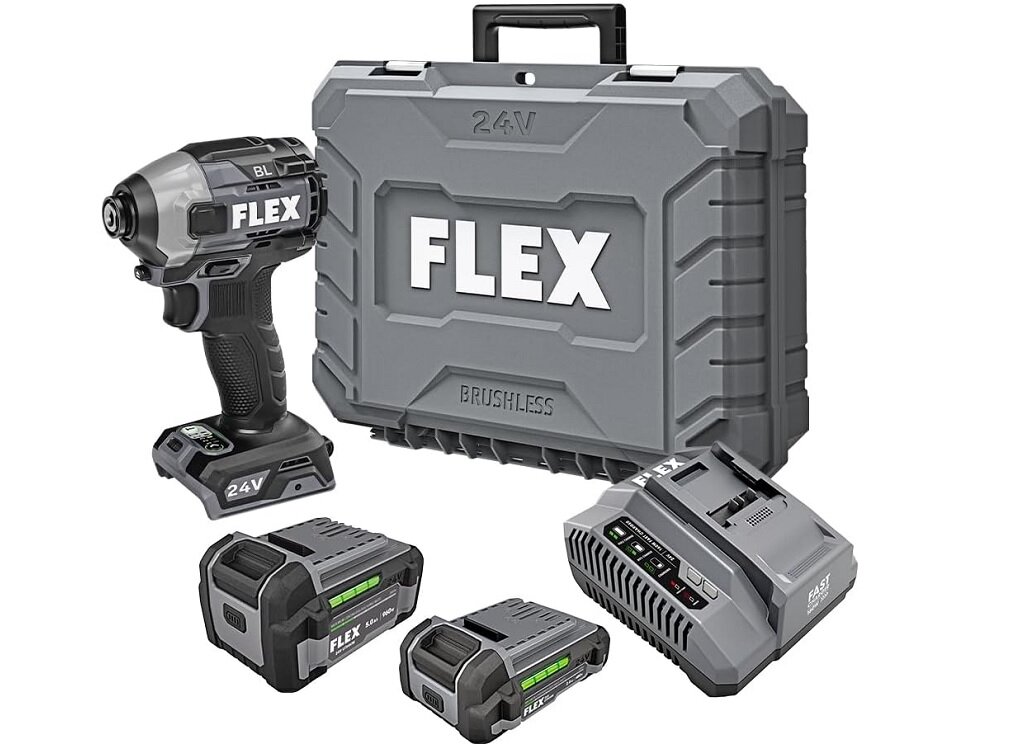
Battery platform compatibility is a critical factor when selecting an impact driver.
Choosing an impact driver that is compatible with a battery platform you already use can be highly advantageous.
It allows you to interchange batteries between different tools, maximizing the utility of your existing batteries.
This compatibility can lead to cost savings as you won’t need to purchase additional batteries for each new tool.
Common Battery Platforms
Several major manufacturers have their own battery platforms.
Brands like DeWalt, Makita, Milwaukee, and Bosch offer extensive ranges of tools that use their specific batteries.
Each platform typically includes a range of battery sizes and capacities to fit various tools.
Benefits of a Unified Battery Platform
Using a unified battery platform means you can streamline your tool inventory.
It simplifies battery management and reduces the hassle of dealing with multiple battery types.
You’ll also benefit from faster charging times and more consistent battery performance across tools.
Considerations When Choosing a Battery Platform
When selecting an impact driver, consider the following factors about battery platforms:
- Compatibility with Existing Tools: Ensure the impact driver uses batteries that are already part of your tool collection.
- Battery Availability and Cost: Check the availability and cost of additional batteries and chargers within the platform.
- Future Expansion: Think about future tool purchases and whether they will fit within the same battery platform.
6. Price vs. Value
When purchasing an impact driver, balancing price and value is crucial to making a smart investment.
Impact drivers come in a wide price range, from budget models to high-end professional tools.
Lower-priced models might be appealing due to their initial cost savings but may lack features or durability.
Higher-priced impact drivers typically offer advanced features, better performance, and longer-lasting components.
Assessing Value for Money
Value is not solely determined by the price but by the features, performance, and durability you get for your money.
Consider what each impact driver offers in terms of performance, build quality, and additional features.
Evaluate how these aspects align with your needs and how they justify the cost.
Key Factors Influencing Value
- Performance: Higher torque, variable speed control, and advanced features enhance the tool’s functionality and usability.
- Durability: A well-built, durable impact driver can save money in the long run by avoiding frequent replacements.
- Features: Extra features such as brushless motors, ergonomic design, and advanced controls can improve efficiency and ease of use.
- Brand Reputation: Reputable brands often offer better support and quality, contributing to long-term value.
Cost vs. Performance
If you need a tool for heavy-duty tasks, investing in a higher-priced model with superior performance might be worthwhile.
For occasional DIY projects, a mid-range model with essential features could provide adequate performance at a lower cost.
Long-Term Investment
Consider the total cost of ownership, including potential maintenance, repairs, and replacement costs.
A higher initial investment in a quality tool may lead to lower long-term costs and better performance.
Making an Informed Decision
- Evaluate Needs: Determine your requirements and how each model meets them.
- Compare Options: Look at different models within your budget and compare their features and benefits.
- Read Reviews: Check user reviews and expert opinions to gauge the real-world value of each impact driver.
7. Features and Accessories
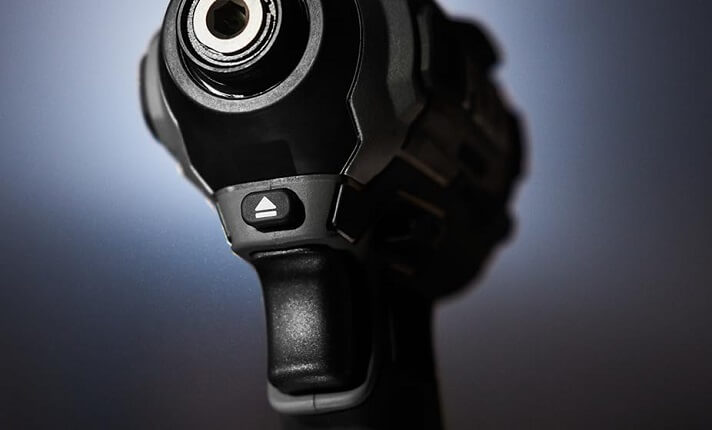
Variable Speed Control
Variable speed control allows you to adjust the speed of the impact driver based on the specific task.
This feature provides greater precision, enabling you to drive screws at varying speeds.
Adjustable speed helps to avoid stripping or damaging fasteners.
Look for impact drivers with a variable speed trigger or dial to offer flexibility for different applications.
Forward/Reverse Switch
The forward/reverse switch is essential for controlling the direction of rotation.
This feature allows you to drive screws in and out, as well as undo fasteners.
Ensure the switch is easy to operate and accessible, allowing for quick direction changes.
LED Work Light
An integrated LED work light illuminates your work area, making it easier to see what you’re doing.
This feature is particularly useful in low-light conditions or tight spaces.
Check if the light is positioned to avoid casting shadows on your work surface.
Ergonomic Design and Grip
A comfortable, ergonomic grip is important for reducing hand fatigue and improving control.
Look for models with rubberized grips and well-balanced designs.
This ensures the tool fits comfortably in your hand, reducing the risk of accidents or strain during extended use.
Size and Weight
The size and weight of the impact driver affect its maneuverability and ease of use.
Smaller, lighter models are easier to handle and are suitable for tight spaces.
However, larger, heavier models may offer more power but can be less convenient to maneuver.
Impact Driver Accessories
Consider what accessories come with or are available for your impact driver.
Features like belt hooks, bit holders, and carrying cases can add convenience and improve the tool’s usability.
Apart from that, features like quick eject button can improve productivity by reducing the tool change time.
Therefore, additional accessories can enhance the functionality of the tool and make your work more efficient.
8. Brand Reputation and Warranty

When selecting an impact driver, the reputation of the brand and the warranty it offers are important factors to consider.
A well-established brand often signifies reliability and quality. So, brands with a strong reputation usually have a track record of producing durable and high-performance tools.
Choosing a reputable power tool brand can provide peace of mind, knowing that you are investing in a product with consistent quality and customer support.
Evaluating Brand Reputation
Look for brands with positive reviews and high ratings from users and experts.
Check for endorsements from professionals in the industry and see how the brand performs in independent tool tests and reviews.
Consider brands with a history of innovation and a commitment to customer satisfaction.
Comparing Warranty Terms
Different brands offer varying warranty terms.
Some provide extended warranties, while others may offer shorter terms but with additional features like free service agreements.
Compare these terms to assess which brand offers the best overall value and support.
Additional Warranty Features
Some brands offer additional warranty features such as:
- Lifetime Warranties: Coverage for the lifetime of the tool.
- No-Hassle Replacements: Easy replacement procedures for defective tools.
- Service Agreements: Free or discounted service for maintenance and repairs.
Brand Support and Customer Service
Apart from the quality and warranty period, consider the quality of customer service and support provided by the brand.
Look for brands with responsive customer service teams and accessible support channels.
Good customer support can be crucial if you encounter issues with your tool or need assistance with warranty claims.
Final Thoughts
Choosing the right impact driver requires balancing key factors such as motor type, voltage, and torque.
Brushless motors offer greater efficiency and longevity, while higher voltage provides more power.
Prioritize features like variable speed control and battery compatibility to match your needs.
Assess brand reputation and warranty for added assurance.
By considering these elements, you can select an impact driver that delivers the best performance and value for your work.
Frequently Asked Questions (FAQ)
1. What’s the difference between a brushed and a brushless impact driver?
Brushless impact drivers are more efficient and durable than brushed models. They offer longer battery life and less maintenance due to the lack of brushes that wear out. Brushed impact drivers, while typically less expensive, don’t perform as well under heavy loads and require more upkeep.
2. How much torque do I need in an impact driver?
The required torque depends on your tasks. For general use, a driver with 1,500 to 2,000 inch-pounds of torque is sufficient. Heavy-duty tasks may require more torque, so consider models with higher ratings if you frequently work with large or stubborn fasteners.
3. Is battery compatibility important when choosing an impact driver?
Yes, battery compatibility is crucial. Opt for impact drivers that use batteries compatible with other tools you own to save on costs and ensure versatility. Different brands and models may have specific battery requirements, so check compatibility before purchasing.
